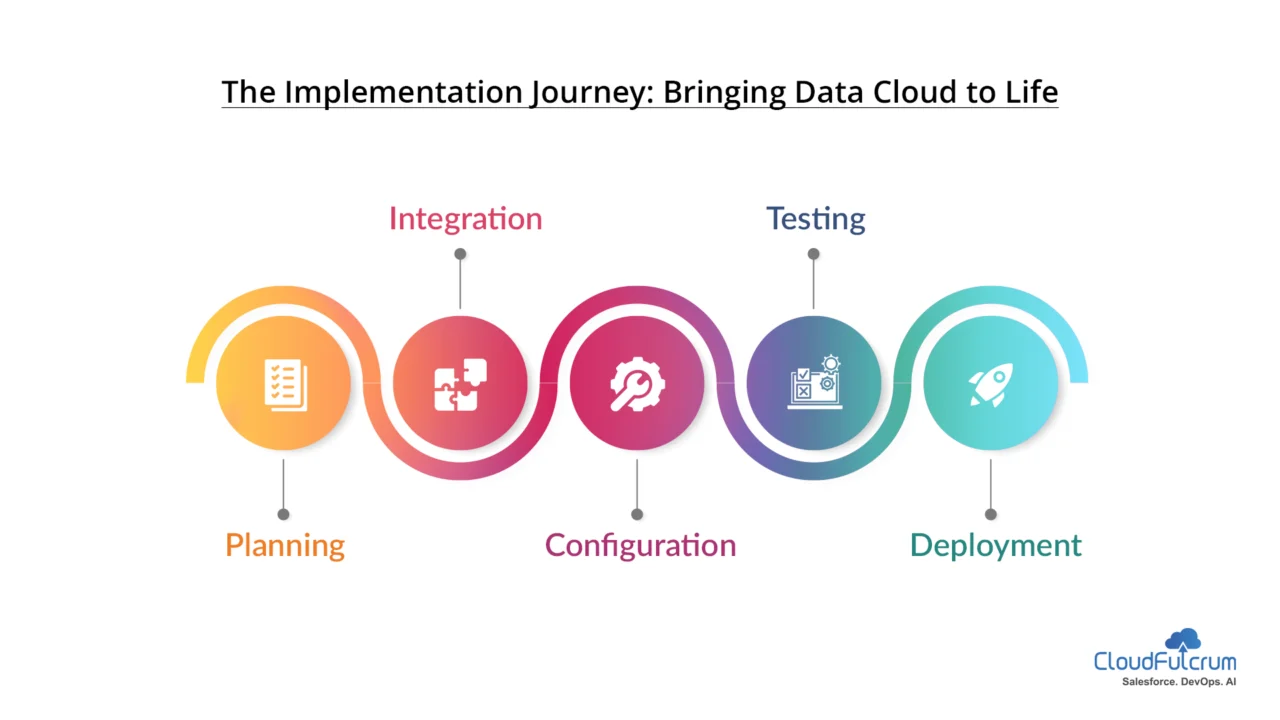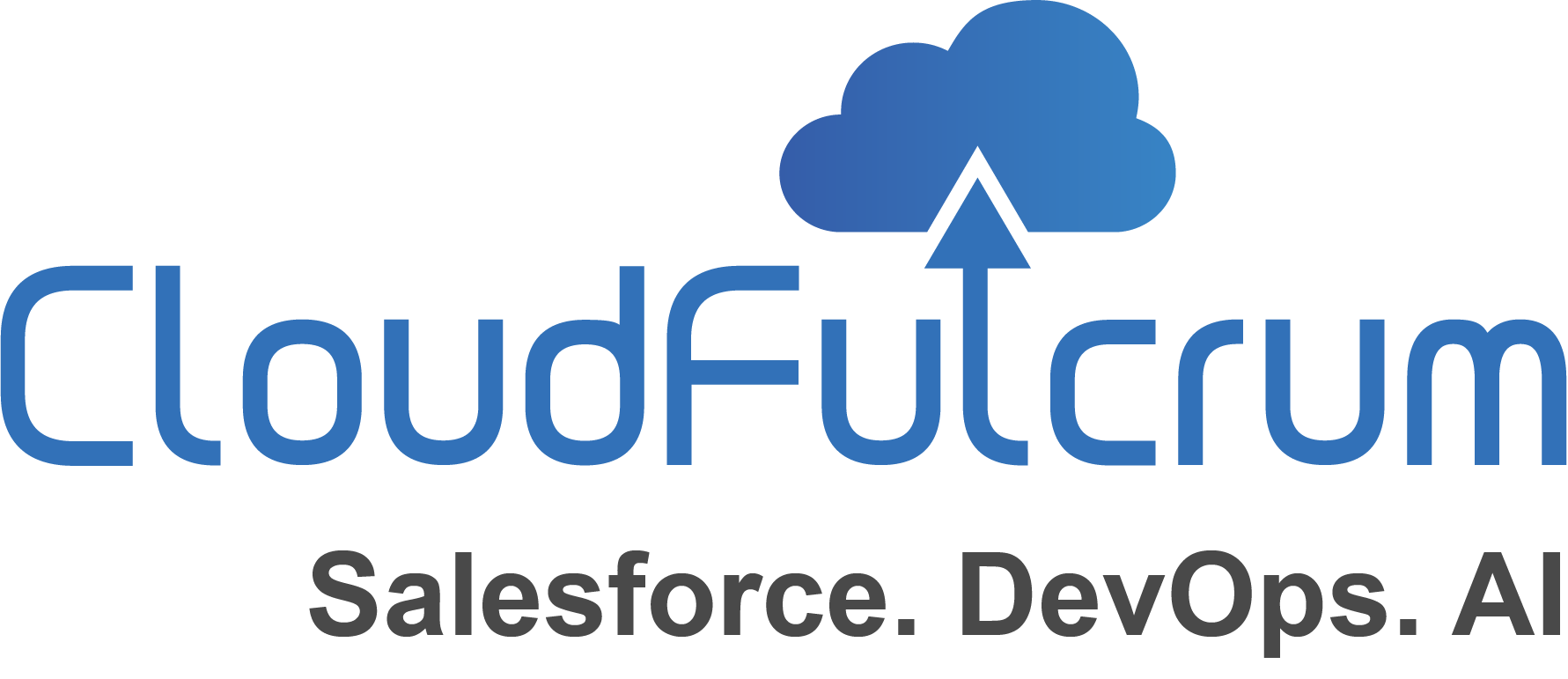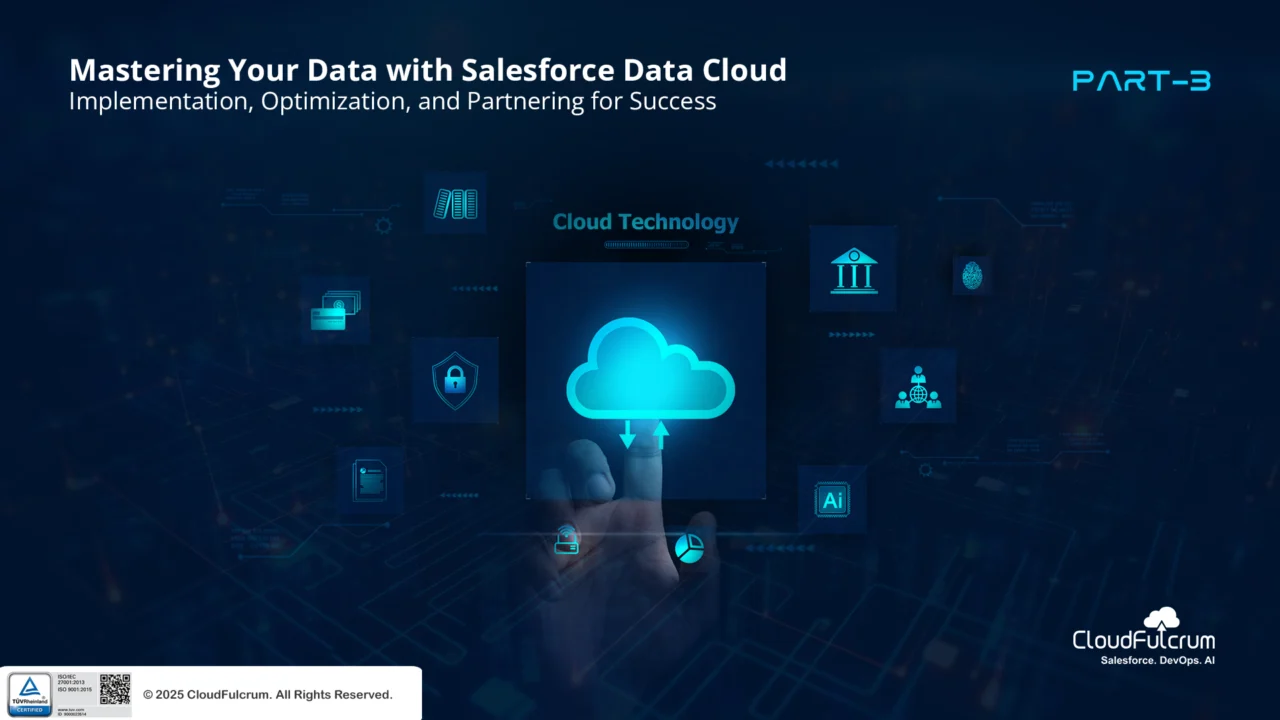Over the course of this series, we’ve explored the transformative power of Salesforce Data Cloud. In Part 1, we discussed how it solves the fundamental challenge of siloed data by unifying customer information into a single source of truth through ingestion, harmonization, and identity resolution. In Part 2, we delved into how this unified data unlocks immense value through precise segmentation, insightful analytics, and seamless activation across channels to deliver personalized experiences.
Now, in this third and final installment, we turn our focus to the practical realities of bringing Data Cloud to life within your organization. Implementing and optimizing a platform as comprehensive as Data Cloud requires careful planning, technical expertise, and a strategic approach to ensure you not only unify your data but also consistently derive maximum business value from it.
Laying the Groundwork: Key Considerations Before Implementation
Before you dive into configuring Data Cloud, a few critical preparatory steps are essential for setting the stage for success:
- Define Clear Business Objectives and Use Cases: What specific problems are you trying to solve with a unified customer view? Is it enhancing personalization in marketing, improving service agent effectiveness, gaining deeper sales insights, or something else? Clearly defined use cases provide the “why” behind your Data Cloud implementation and guide your configuration decisions.
- Assess Your Data Landscape: Gain a thorough understanding of where your customer data currently resides. Identify all relevant source systems (CRM, ERP, marketing platforms, e-commerce, websites, mobile apps, loyalty programs, etc.). Evaluate the quality, volume, and accessibility of this data. Data Cloud can handle diverse data, but understanding your sources is key.
- Align Stakeholders: Data Cloud impacts teams across the organization – Marketing, Sales, Service, IT, Analytics, Compliance, etc. Ensure buy-in and alignment on objectives, data sharing policies, and expected outcomes from all relevant stakeholders early in the process.
- Establish a Robust Data Governance Framework: Data unification brings governance to the forefront. Define data ownership, quality standards, privacy policies, consent management processes, and security protocols before ingesting sensitive data. Data Cloud provides tools to support governance, but the organizational framework must be in place.
The Implementation Journey: Bringing Data Cloud to Life
Implementing Data Cloud is a multi-phase process that requires expertise in data architecture, integration, and platform configuration.
- Phase 1: Data Strategy and Discovery: This involves detailed planning based on your defined use cases. It includes mapping your data sources to the Data Cloud data model, defining data streams, planning harmonization rules, and establishing identity resolution criteria. A clear data strategy ensures that the data brought into Data Cloud directly supports your business objectives.
- Phase 2: Configuration and Integration: This is the technical core. It involves setting up your Data Cloud instance, configuring connectors to your various data sources, and initiating the data ingestion processes. A crucial and often complex step is precisely mapping the fields from your source systems to the unified Data Cloud data model and configuring the harmonization rules. Setting up the identity resolution rules, testing them against your data, and refining them to accurately match customer profiles is also a vital part of this phase.
- Phase 3: Segmentation, Analytics, and Activation Setup: Once data is flowing and identities are resolved, you configure the downstream capabilities. This includes building initial key segments based on your priority use cases, setting up calculated insights, configuring connections to analytics tools like Tableau or CRM Analytics, and defining and configuring activation targets (e.g., Marketing Cloud, advertising platforms) and activation flows to push unified data and segments to other systems.
- Phase 4: Testing and Validation: Rigorous testing is non-negotiable. Validate that data is being ingested accurately and completely, that harmonization and identity resolution rules are functioning as expected, and that your defined segments precisely capture the intended audiences. Test activation flows to ensure data is being published correctly to target systems.
- Phase 5: Deployment and Rollout: Plan a phased rollout, starting with a pilot group or a specific use case. This allows you to gather feedback, identify any unforeseen issues in a controlled environment, and refine the implementation before a wider deployment across teams or use cases.

Optimizing for Ongoing Success: Maximizing Value Over Time
Implementing Data Cloud is an investment that requires ongoing attention to ensure you continue to derive maximum value. Optimization is a continuous process.
- Continuous Data Monitoring and Quality Management: Data quality is not a one-time fix. Implement ongoing monitoring to ensure data streams are healthy, data remains accurate, and identity resolution continues to perform optimally as new data sources or types are added.
- Regular Review and Refinement of Segments and Activations: Business needs and customer behaviors evolve. Regularly review your defined segments and the performance of your activation campaigns. Refine segmentation criteria based on new insights and adapt your activation strategies to optimize engagement and ROI.
- Keeping Pace with Data Cloud Updates: Salesforce is continuously enhancing Data Cloud, releasing new connectors, features, and performance improvements. Stay informed about these updates and plan how to leverage them to enhance your existing implementation and unlock new capabilities.
- Measuring ROI and Demonstrating Value: Continuously track key metrics aligned with your initial business objectives and use cases. Quantify the impact of Data Cloud on areas like marketing campaign performance, sales conversion rates, service resolution times, and operational efficiency to demonstrate the platform’s value and secure ongoing investment.
- Training and User Adoption: Ensure that business users across departments are adequately trained on how to access, understand, and utilize the unified data, segments, and insights available in Data Cloud and connected systems. User adoption is key to realizing the platform’s benefits.

Addressing Common Implementation Challenges
While powerful, Data Cloud implementation can present challenges, including:
- Data Quality Issues: Inconsistent or incomplete data from source systems can impact harmonization and identity resolution.
- Complex Identity Resolution: Defining accurate matching and reconciliation rules across diverse datasets can be intricate.
- Integrating Legacy Systems: Connecting and mapping data from older or non-standard systems can require custom solutions.
- Change Management: Ensuring buy-in and adoption from teams accustomed to working with siloed data requires effective change management.
- Defining Clear Ownership and Governance: Establishing clear roles and processes for data ownership and governance can be challenging in large organizations.
Successfully navigating these challenges requires a combination of technical expertise, strategic planning, and effective cross-functional collaboration.
Partnering for Data Cloud Mastery: The CloudFulcrum Advantage
Implementing and optimizing a platform as strategic and technically complex as Salesforce Data Cloud is where the right partnership makes a significant difference. CloudFulcrum specializes in helping businesses unlock the full potential of their data with Salesforce.
Our expertise spans the entire Data Cloud journey:
- Strategic Planning and Use Case Definition: We help you identify the most impactful use cases for Data Cloud and develop a tailored data strategy aligned with your business goals.
- Expert Implementation and Integration: Our certified specialists provide the technical expertise to connect your data sources, configure harmonization and identity resolution rules, and ensure accurate data flow into Data Cloud, including complex legacy system integrations.
- Customization and Configuration: We help you build calculated insights, define advanced segmentation rules, and configure activation targets and flows to meet your specific business requirements.
- Data Governance and Security: We advise on and help implement robust data governance frameworks within Data Cloud, ensuring compliance and data security.
- Training and Adoption: We support user training and change management initiatives to ensure your teams can effectively leverage Data Cloud.
- Optimization and Ongoing Management: We provide services for continuous monitoring, performance optimization, and adapting your Data Cloud instance as your data landscape and business needs evolve.
We partner with you to transform your fragmented data into a strategic asset, enabling personalized customer experiences, driving operational efficiency, and empowering data-driven decision-making.
Conclusion
Salesforce Data Cloud is a game-changer for businesses seeking to move beyond fragmented data to a single, unified view of their customer. This unified foundation, activated through powerful segmentation and analytics, is essential for delivering the personalized and intelligent experiences customers expect today. While the implementation requires careful planning and execution, the potential rewards in terms of enhanced customer engagement, operational efficiency, and strategic insight are immense.
This series has provided a comprehensive overview of Data Cloud, from understanding its core purpose to exploring its capabilities and the practicalities of implementation. By addressing the key considerations and partnering with experts like CloudFulcrum, you can successfully master your data and unlock the full Agentforce Advantage.
Thank you for joining us on this journey into the world of Salesforce Data Cloud. We hope this series has been informative and valuable.
Are you ready to unify your data and unlock its full potential? Contact CloudFulcrum today to discuss your Data Cloud strategy and implementation needs.

